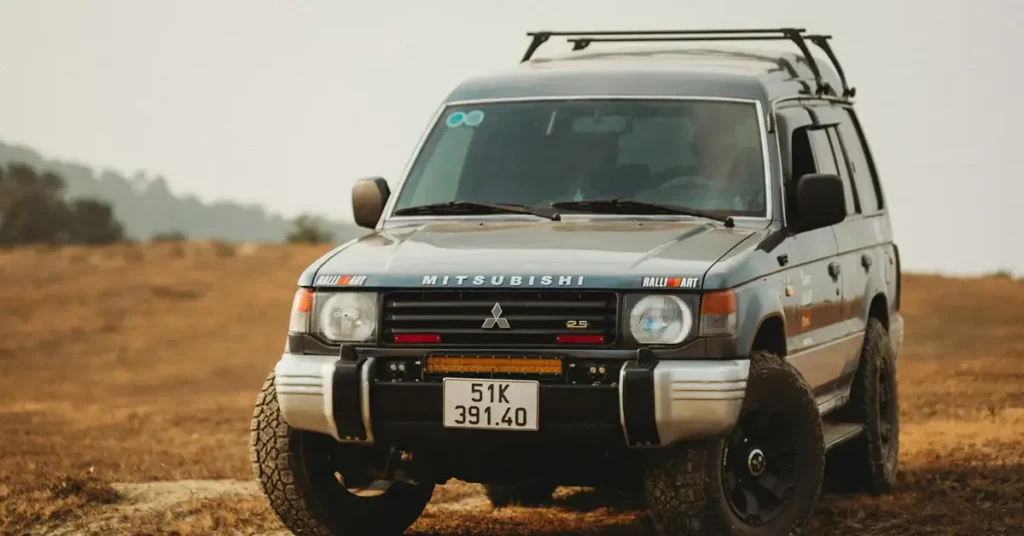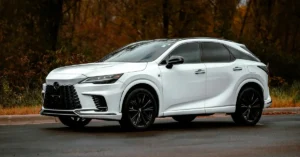There’s a certain respect the Mitsubishi Pajero commands when it rolls by. Maybe it’s nostalgia, maybe it’s the unmistakable boxy confidence of a proper SUV that isn’t trying to look like a crossover. The Pajero IV (NS), sold between 2006 and 2023 with a series of refinements, has outlasted many of its rivals. But after years of duty across deserts, mountains, and highways, how well does it hold up?
For anyone eyeing a used Pajero from the 2013–2023 era, this isn’t just a question of price. It’s about knowing whether you’re buying into the last chapter of an off-road legend or a maintenance head ache waiting to happen.
The Pajero IV at a Glance
Before the world turned soft and started calling everything an SUV, the Pajero was a proper 4×4. The fourth generation (NS/NX) retained body-on-frame toughness wrapped in a slightly modernised shell.
Key Highlights
- Production years covered: 2013–2023 (global)
- Layout: Ladder-frame with full-time 4WD (Super Select II)
- Engines: 3.0 V6 petrol (177 hp), 3.8 V6 petrol (250 hp), 3.2 Di-D diesel (200 hp)
- Gearboxes: 5-speed auto and 5-speed manual
- Seating: Up to 7 passengers
- Towing capacity: 3,000 kg (braked)
It’s solid, simple, and built to endure rough conditions. But “solid” doesn’t always mean “trouble-free.”
Engine and Drivetrain Reliability
The 3.8 V6 Petrol
The most popular engine in markets such as the Middle East and Asia, the 3.8-litre V6 is reliable when maintained correctly. Common issues revolve around:
- Timing-belt wear: replacement every 90,000 km is critical.
- Valve-stem seals: oil consumption increases past 150,000 km.
- Cooling system leaks: water pumps tend to fail after 120,000 km.
The 3.0 V6 is less powerful but easier on fuel and cheaper to maintain.
The 3.2 Di-D Diesel
Favoured in Europe and Australia, it’s a workhorse but not perfect.
- EGR valve clogging and soot build-up can cause rough idling.
- Injector seals may fail, leading to diesel smell and oil dilution.
- Turbo actuator issues have been reported in pre-2015 models.
Overall, none of these faults are catastrophic if caught early. Routine servicing and high-quality lubricants extend engine life well beyond 300,000 km.
Transmission and Transfer Case
The 5-speed automatic (V5A51) has proven sturdy but not invincible.
- Fluid overheating: happens during off-road towing without auxiliary cooling.
- Shift flare between 2nd and 3rd gear: sign of worn solenoids.
- Transfer-case leaks: occasionally seen on high-mileage units.
Manual gearboxes are nearly indestructible, with only clutch-wear complaints after 150,000 km. Regular fluid changes are non-negotiable for longevity.
Chassis, Suspension, and Ride Comfort
Even after a decade, the Pajero feels more rugged than most new SUVs.
Its independent suspension front and rear gives it road comfort, while the Super Select 4WD system allows switching between 2H, 4H, and 4L on the fly.
Known Wear Points
- Upper control arm bushings and rear shock mounts tend to go soft by 100,000 km.
- Body mounts can creak under heat and load.
- ABS sensors are exposed and often fail after dusty drives.
Despite that, the ride is more composed than a Toyota Land Cruiser Prado and less floaty than a Nissan Patrol Y61.
Interior and Electronics
The cabin aged gracefully simple dashboard, sturdy plastics, and intuitive controls. But the world of electronics wasn’t Mitsubishi’s forte back then.
Typical Issues
- Touchscreen failures in models with Rockford audio systems.
- Air-con blowers that lose speed control due to resistor pack faults.
- Instrument cluster pixels fading with heat exposure.
Nothing fatal, but a reminder that “simple” doesn’t always mean “flawless.”
The Overconfidence Trap
Problem: Many owners skip preventive maintenance because the Pajero has a bulletproof reputation.
Agitate: By the time you notice oil smell, driveline vibration, or overheating, the damage is already done. Ignoring service intervals shortens engine life drastically.
Solution: Treat the Pajero like a tough athlete—strong but not invincible. Stick to manufacturer-recommended service intervals, use high-quality fluids, and don’t ignore minor leaks. It will reward you with decades of trouble-free performance.
Best and Worst Model Years
Best Years: 2016–2020 models are the sweet spot for refined gearboxes and fewer electrical glitches.
Avoid: Early 2013 models with software bugs in the ECU and less effective air conditioning.
Maintenance
Oil and filter every 10,000 km, transmission fluid every 40,000 km, and timing-belt every 90,000 km.
Parts availability is strong in Asia, Australia, and the Middle East. Independent mechanics can service it easily without dealership prices.
Frequently Asked Questions
Q1: Is the Pajero IV good for off-road use?
Absolutely. The Super Select II 4WD system offers low-range gearing and center differential lock, making it capable on sand, gravel, and rocky terrain.
Q2: How reliable is the 3.8 V6 engine?
Very reliable with regular oil changes and timing-belt replacements. Avoid overheating—it’s the engine’s main enemy.
Q3: Is it worth buying a used Pajero in 2025?
Yes, if service records are complete and it’s been properly maintained. Prices are reasonable and the vehicle still holds strong resale value in many regions.
Q4: What are the main weak spots?
Suspension bushings, A/C blower resistors, and instrument cluster pixels are the most common.
Q5: Which variant offers the best value?
The 3.8 V6 Exceed trim offers a good mix of equipment and longevity without diesel complexity.
MotorHub UAE – Service Support for Long-Life SUVs
In the UAE, where heat and dust push mechanicals to their limits, MotorHub UAE offers specialized maintenance for robust SUVs like the Mitsubishi Pajero, Toyota Prado, and Nissan Patrol. Our technicians handle everything from 4WD transfer-case servicing to suspension rebuilds and air-conditioning repairs tailored for desert conditions. If your Pajero has seen better days, we help it run like new again with dealer-level diagnostics and genuine parts.



